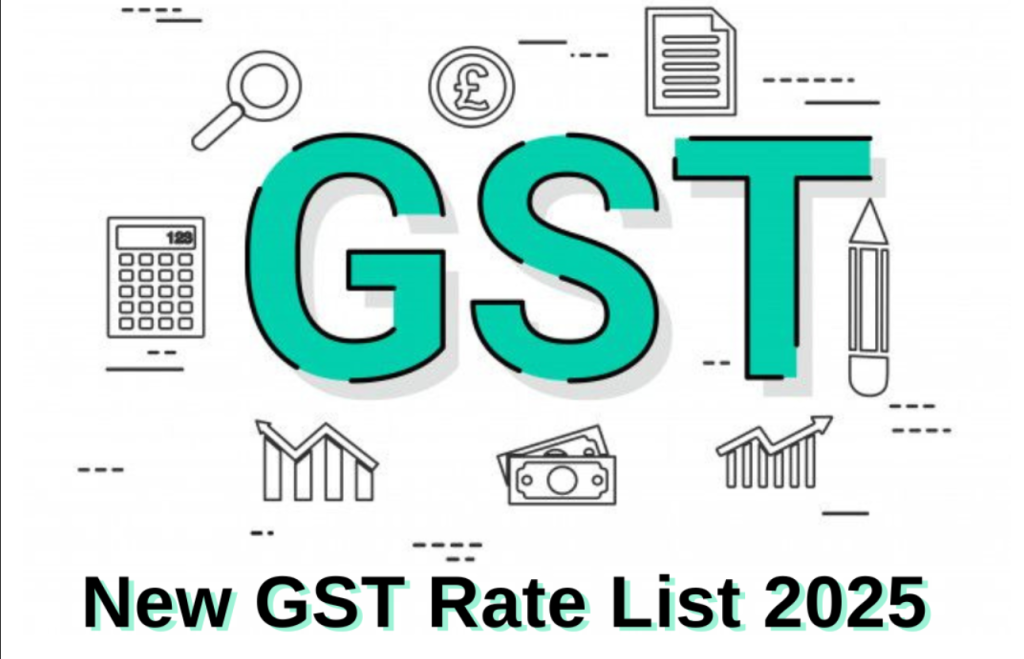
The 56th GST Council meeting, held on 3rd September 2025, ushered in one of the biggest transformations to India’s Goods and Services Tax system—officially known as GST 2.0. These changes took effect from 22nd September 2025, simplifying the complex multi-slab system into a structure that promotes fairness, transparency, and ease of compliance.
Overview of the 2025 GST Rate Reform
Previously, India’s GST system had four main slabs—5%, 12%, 18%, and 28%. As part of GST 2.0, these have been rationalized into:
- 5% (Merit Rate): Essential and mass-consumption goods
- 18% (Standard Rate): General goods and services
- 40% (Luxury/Sin Rate): Luxury goods, tobacco, betting, and other demerit sectors
Additionally, nil-rated categories now include essentials in healthcare and education, aligning with social welfare goals.
Key Revisions and Highlights
1. Food and Household Essentials
Essential goods such as shampoo, toothbrushes, detergents, soaps, and toothpaste now attract 5% GST (from 18%), significantly reducing daily household expenses. Dairy products like butter, ghee, and paneer also fall under nil or 5% rates, enhancing affordability.
2. Agriculture and Farming Inputs
To aid farmers, the GST on tractors, irrigation systems, fertilizers, and biopesticides has been reduced from 12–18% to 5%. This move corrects the inverted duty structure and encourages sustainable farming practices.
3. Healthcare Sector
The government has exempted health and life insurance from GST, while 33 life-saving drugs and medical devices now attract nil or 5% rates. This includes products like medical oxygen, thermometers, and diagnostic kits, directly benefiting hospitals and patients.
4. Education Sector
Items like pencils, erasers, notebooks, maps, and atlases have been moved to the nil-GST list. Educational aids such as geometry boxes and art materials now attract only 5% GST to support students and institutions.
5. Automobile and Electronics
GST on two-wheelers, three-wheelers, and small cars (≤350cc or ≤4000mm in length) was reduced from 28% to 18%. Likewise, televisions, ACs, refrigerators, and washing machines shifted from 28% to 18%, easing costs for common households.
6. Services Sector
Hotel accommodation below Rs. 7,500 per day and wellness or beauty services (yoga, salons, gyms) now attract 5% GST (down from 12–18%). These changes aim to boost tourism and service sectors during the festive period.
7. Rate Hikes on Luxury and Sin Goods
- Luxury cars, yachts, and motorcycles (over 350cc): 40%
- Pan masala, tobacco, and aerated drinks: 40%
- Online games, casinos, and betting activities: 40%
This step merges the compensation cess directly into the new GST rate—removing the need for double taxation layers.
Compliance and Procedural Changes
Besides rate adjustments, numerous notifications (09/2025–17/2025) were issued:
- Simplified ITC (Input Tax Credit) recovery process
- Pre-filled and auto-synced GST returns
- Faster refund timelines under Rule 91(2)
- Reduced paperwork for small and composition taxpayers
Businesses must now ensure suppliers pay their GST before claiming ITC. The GST Appellate Tribunal, launching in December 2025, will streamline dispute resolution.
Economic Impact
Experts forecast that the GST 2.0 structure will:
- Boost consumer demand by lowering retail prices
- Increase tax compliance rates through simplified returns
- Enhance small business operations under reduced rates
- Expand the tax base, compensating for minor revenue loss from exemptions
Large-scale benefits are expected across MSME, e-commerce, manufacturing, and service sectors by early 2026.
Verify Official Notifications and Full Rate Lists
You can read the complete, itemized rate tables and government notifications through official and reliable resources:
- Central Board of Indirect Taxes and Customs (CBIC) –
Official GST notifications and rate tables:
https://www.cbic.gov.in - Press Information Bureau (PIB) India –
Press releases on GST reforms and council announcements:
https://pib.gov.in - ClearTax – Full Itemized GST Rate List 2025 –
https://cleartax.in/s/gst-rates - Zoho Books GST Academy: GST Rate Change 2025 Overview –
https://www.zoho.com/in/books/academy/taxes-and-compliance/gst-rate-change-2025.html
Summary
The 2025 GST reform marks India’s transition to a more efficient, transparent, and consumer-friendly tax framework. By reducing rates on essentials and increasing rates on luxury and sin goods, the government aims to drive equitable growth across all sectors. Businesses are encouraged to update their pricing, tax invoices, and accounting systems immediately to remain compliant under GST 2.0.